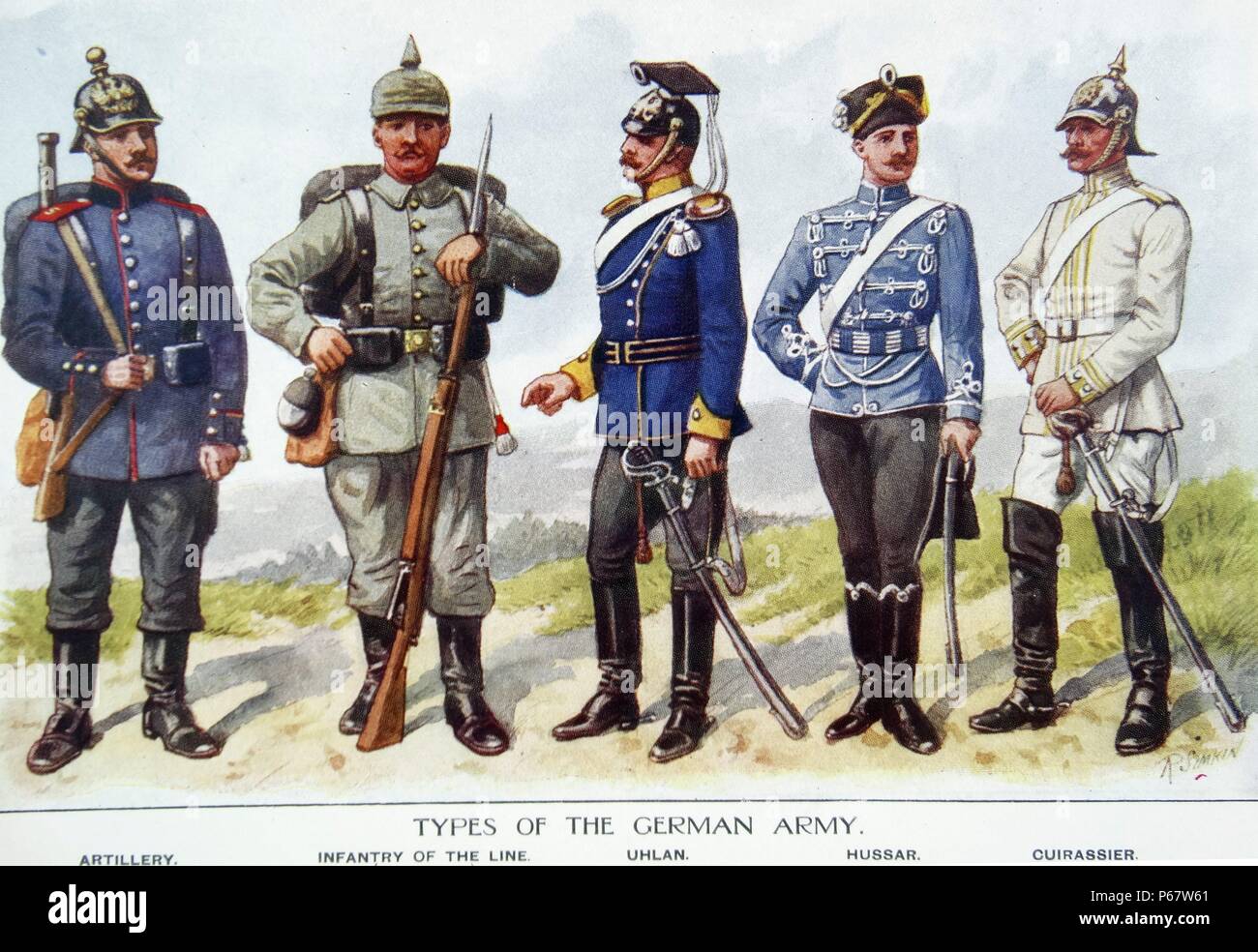
Первая мировая война, Исторические фотографии, Солдаты
When the Nazis came to power in early 1933 the Reichswehr, the armed forces of the Weimar Republic, were near the end of a two-year project to redesign the Army Feldbluse (field blouse).

Pin on Reenacting
The British wore khaki uniforms throughout World War One. These uniforms had originally been designed and issued in 1902 to replace the traditional red uniform and remained unchanged by 1914. A formative shot of men of the original Rhodesian Platoon of the King's Royal Rifle Corps, 1914. Image credit: Public Domain, via Wikimedia Commons.

Pin on "All Quiet on the Western Front" & WW1
The German Army of 1914 went into battle in a uniform little changed from the 19th Century. In 1910, the Army field uniform was modernized, mainly by changing the color from blue to field grey. The modernized uniform standards maintained the rank insignia for Officers and Non-Commissioned Officers, most of which had been in use since the 18th.

Pin on History
Object Details Category Books Related period First World War (content), First World War (content) Creator Kraus, Jurgen (Author) Catalogues Of The Bayerisches Armeemuseum Ingolstadt; Vol. 2 (Author) Verlag Militaria (Publisher) Production date 2004 Place made Vienna Dimensions

German army uniforms from World war One Stock Photo Alamy
Uniforms 1915 BLUSE Standardized Uniform (L) M1908 Greatcoat with 1915 Modifications (R) -x-x-x-x-x-x-x-x-x-x-x-x-x- Model 1915 BLUSE Early, 1916 dated Model 1915 BLUSE with period mounted shoulder straps for the Reserve Infantry Regiment 267. * click photo for link to details page * -x-x-x-x-x-x-x-x-x-x-x-x-x- Model 1915 Mantel

Imperial German officer's WWI uniform tunic and cap. Uniforms of WW I Pinterest German
Overview World War I mobilization, 1 August 1914 The German population responded to the outbreak of war in 1914 with a complex mix of emotions, in a similar way to the populations in other countries of Europe; notions of overt enthusiasm known as the Spirit of 1914 have been challenged by more recent scholarship. [1]

WWI German equipment. Everything a soldier needs... Military Gear, Military Weapons, Military
The German Army in the First World War: Uniforms and Equipment, 1914 to 1918 Paperback - Import, January 1, 2006 by Jurgen Kraus (Author) 4.8 5 ratings See all formats and editions
German army uniforms and insignia. UNT Digital Library
From the iconic Pickelhaube to the almost legendary Stahlhelm and the field grey colour, German military uniforms of World War 1 are instantly recognisable..

"The Last Hussar" August von Mackensen, one of the most capable German general in World War I
2 Answers Sorted by: 12 It is a German uniform of that era. The biggest hints are the cut of it, as visible, the classicist font used for the number on the shoulder boards, and most important: the two cockades on the hat. The upper cockade would have been in imperial colours (black white and red) and the lower in the colours of the issuing state.

DEUTSCHES HEER Germania 191416 1 Leutnant, 2° Flieger Btl. 1914 Gemeine, Bavarian FFA 2
Please find below our selection of WW1 German Uniforms. Show per page , WW1 German M15 Tunic From £84.95 In stock WW1 German M15 Trousers From £54.95 In stock German WW1 M1907 Field Cap From £22.95 In stock German Black Leather Belt and WW1 Buckle £29.90 In stock German Brown Leather Belt and WW1 Buckle £28.40 £29.90 In stock

WWI German Imperial Army Impressions 19141918 YouTube
(YouTube/BBC) As the war progressed, the uniforms changed. France was the first to add helmets, and they adopted a uniform cloth that would incorporate red, white, and blue threads. A lack of red dye — it was manufactured in Germany — made the resulting fabric light blue instead of purplish-brown.

Pin on Kaiser's army
February 22, 2022 by Yukta Singh Germany had a wide assortment of military uniforms before World War 1. Each state in the country had a distinct uniform in color, cut-out, belt-buckle motto, and helmet plate. The luxury of maintaining heterogeneous uniforms was only reasonable under peacetime conditions.

Pin on WW1 Colorized Pics.
During World War II, the design of German military uniforms underwent further modifications to accommodate the needs of a war fought on multiple fronts. The standard field uniform, known as the M36 uniform, was introduced in 1936 and featured a more practical design with simplified details and a more muted color palette.

A German World War II soldier's uniform comprising great c
During the First World War the only khaki dye available for British Army uniforms was manufactured in Germany, which, at first, it secretly imported. Read more | 10 WW1 generals you should know about For a time, khaki was replaced by 'Kitchener blue'

WW1 Imperial German Soldier uniform 1914 with webbing
The growth of the German Army from 1870 to 1914, was a quartermaster's nightmare in supply for all the different types of helmets and uniforms for all the various German regiments and branches of service.

Pin on Featured Items
The story of the German uniform begins with the Prussian Army, established in 1701 by Frederick I of Prussia. The uniforms of this era were primarily designed to be functional and instil discipline, but they also included elements that reflected the soldiers' rank and unit.